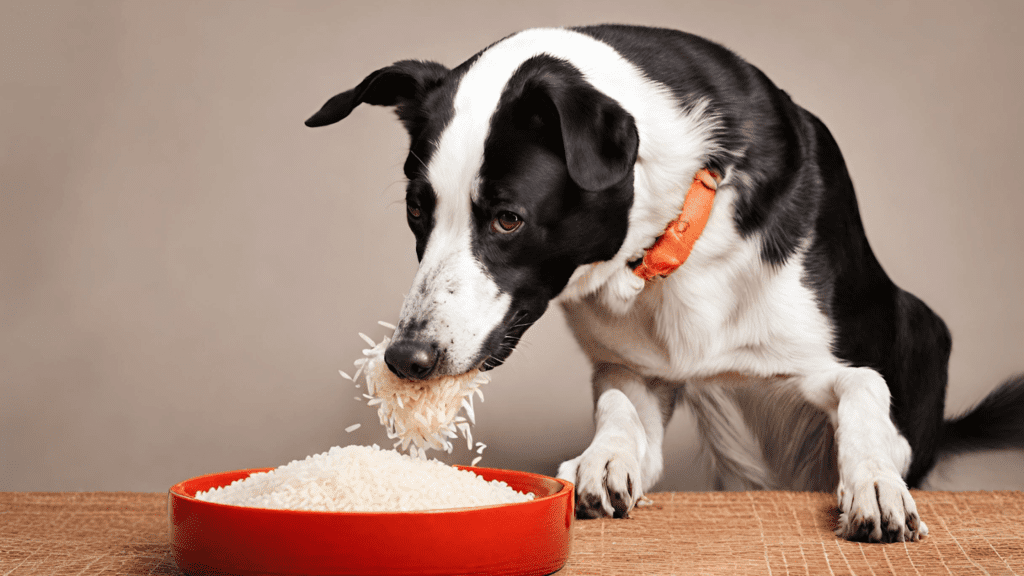
Introduction:
In the realm of pet nutrition, the question “Can dogs eat rice?” is one that often sparks debates among pet owners and veterinarians alike. Rice, a staple in many human diets, has found its way into the bowls of countless canine companions. But is it a safe and nutritious addition to a dog’s diet, or should it be approached with caution? In this article, we will explore the benefits and potential risks of feeding rice to dogs, shedding light on the intricacies of canine nutrition.
The Canine Diet: An Overview
Before delving into the specifics of whether dogs can eat rice, it’s essential to understand the basic principles of the canine diet. Dogs are omnivores, meaning they can consume a variety of foods, including both plant-based and animal-based ingredients. However, their nutritional requirements differ from those of humans.
Proteins, fats, carbohydrates, vitamins, and minerals all play crucial roles in a dog’s overall health. While protein is essential for muscle development and maintenance, fats provide a concentrated source of energy. Carbohydrates, on the other hand, contribute to energy production and can be sourced from grains like rice.
The Benefits of Rice in a Dog’s Diet:
- Digestible Carbohydrates: Rice is a highly digestible carbohydrate source, making it an excellent energy source for dogs. It provides a readily available source of glucose, which is vital for fueling a dog’s active lifestyle. Additionally, rice is a complex carbohydrate, meaning it releases energy gradually, helping to maintain stable blood sugar levels in dogs.
- Easy on the Digestive System: Dogs with sensitive stomachs or digestive issues may benefit from a diet that includes rice. Its bland and easily digestible nature can help soothe upset stomachs and alleviate diarrhea. Veterinarians often recommend a diet consisting of boiled rice and lean protein (such as chicken or turkey) for dogs recovering from gastrointestinal issues.
- Gluten-Free Option: Rice is naturally gluten-free, making it a suitable choice for dogs with gluten sensitivities or allergies. In a market flooded with various dog food options, rice serves as a valuable alternative for dogs with dietary restrictions.
- Nutrient Content: While rice is not as nutrient-dense as some other foods, it still contains essential vitamins and minerals. Brown rice, in particular, retains more nutrients than its white counterpart, offering small amounts of manganese, magnesium, and B vitamins.
Potential Risks and Considerations:
- Nutrient Imbalance: While rice provides carbohydrates, it lacks certain essential nutrients that dogs need for optimal health. Feeding a diet exclusively composed of rice may lead to nutrient imbalances over time, as dogs require a diverse range of nutrients, including proteins and fats.
- White Rice vs. Brown Rice: The choice between white rice and brown rice is crucial when considering its nutritional value for dogs. Brown rice retains more nutrients, including fiber, vitamins, and minerals, compared to the more processed white rice. It’s important to opt for the whole grain option to maximize nutritional benefits.
- Portion Control: Like any food, moderation is key when incorporating rice into a dog’s diet. Excessive consumption can lead to weight gain, which, in turn, may contribute to various health issues such as obesity, joint problems, and diabetes. Pet owners should be mindful of portion sizes and consider rice as part of a balanced diet.
- Potential for Allergies: While rare, some dogs may develop allergies to rice. It’s essential to monitor a dog’s reaction when introducing rice into their diet for the first time. Allergic symptoms may include itching, gastrointestinal upset, or respiratory issues.
Practical Tips for Feeding Rice to Dogs:
- Consult with a Veterinarian: Before making any significant changes to a dog’s diet, it is crucial to consult with a veterinarian. They can provide personalized advice based on the dog’s age, breed, health status, and specific nutritional needs.
- Choose Whole Grains: Opt for whole grains like brown rice over processed white rice. Whole grains offer more nutritional value, including fiber, which contributes to digestive health.
- Combine with Protein: For a balanced meal, combine rice with a lean source of protein, such as chicken or turkey. This combination ensures that a dog receives a well-rounded mix of nutrients.
- Monitor Portion Sizes: Be mindful of portion sizes, especially for smaller breeds or dogs prone to weight gain. Adjust the amount of rice based on the dog’s size, activity level, and overall health.
- Observe for Allergic Reactions: When introducing rice into a dog’s diet for the first time, closely monitor for any signs of allergic reactions. If symptoms persist, consult a veterinarian promptly.
Conclusion:
In answering the question “Can dogs eat rice?” the consensus is generally positive, with many veterinarians endorsing rice as a safe and beneficial addition to a dog’s diet when used responsibly. As with any dietary component, moderation and careful consideration of individual health factors are crucial.
Rice can offer dogs a digestible source of energy, aid in digestive health, and serve as an alternative for those with specific dietary restrictions. However, it’s essential to recognize the potential risks, including nutrient imbalances, allergies, and the importance of choosing whole grains over processed options.
Ultimately, a well-rounded and balanced diet, tailored to the individual needs of each dog, is key to ensuring their overall health and well-being. By understanding the nuances of canine nutrition and making informed choices, pet owners can provide their furry companions with the best possible care, including the occasional serving of rice as a part of their wholesome diet.



